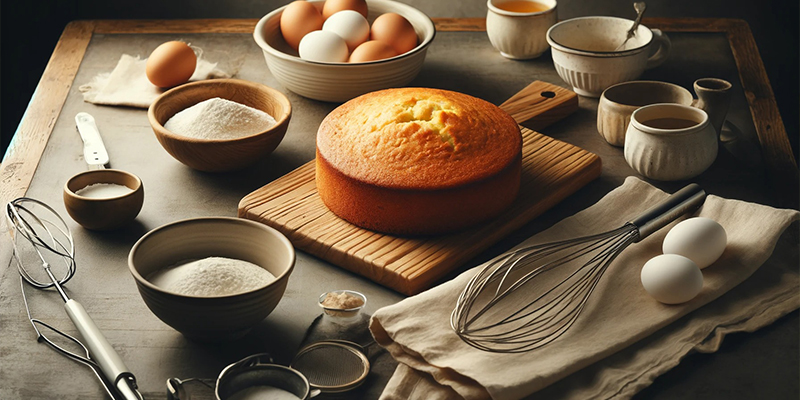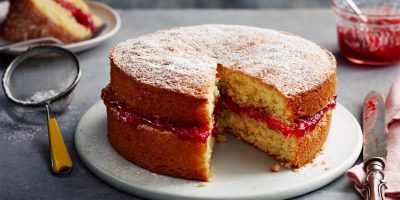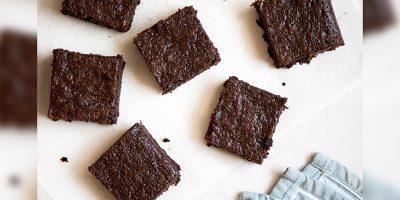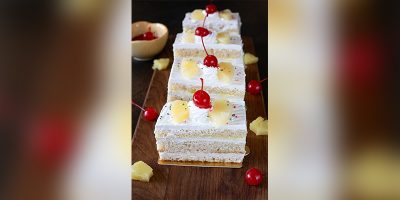A slice of cake can be a slice of heaven—unless it’s a dry or dense cake, turning what should be a delightful dessert into a disappointing dud. If you’ve ever experienced this baking blunder, you know the frustration. But fear not! Ensuring your cakes come out moist and fluffy every time is easier than you think. Here’s how to keep the dreaded dryness at bay and avoid a rubbery cake issue that’s more brick than bliss. Read on to find the perfect tips to steer clear of a dry cake situation:
How to Keep Your Cakes Moist and Delicious
Baking a cake that’s both delicious and perfectly moist is an art that any baker, whether novice or seasoned, aims to master. Dryness in cakes can be a common issue, but with the right techniques and tips, you can ensure your cakes remain wonderfully moist and delectable, just like the online cakes that you order on all occasions. Here are some key strategies to help you achieve that perfect bake:
Precision is Key
Baking is a science, where every teaspoon matters. Unlike cooking, where you can often rely on intuition, baking requires precision. Use a kitchen scale for ingredients if possible. Measuring cups can be misleading due to the way flour compacts. Too much flour or leavening agents and you’re on a fast track to Dryville.
Room Temperature Ingredients
Ingredients combine more uniformly when they’re at similar temperatures. This is particularly true for butter, eggs, and dairy. Cold ingredients don’t mix well, leading to overmixing—a prime culprit for a dry and dense cake. So, let your ingredients warm up a bit before starting your baking adventure.
The Creaming Method
The way you blend butter and sugar can make or break your cake’s texture. This process, called creaming, introduces air into the batter, contributing to a lighter cake. Beat the butter and sugar together until they’re pale and fluffy, which usually takes about 3-5 minutes. This isn’t the step to cut short if you do not want a dry cake!
Mind Your Mixing
After adding flour to the mix, the game changes. Overmixing the batter once the flour is in can activate the gluten, making your cake more bread-like. Mix until just combined—no more, no less. A gentle hand ensures a tender cake.
Buttermilk is Your Friend
The acidity in buttermilk tenderises the gluten in the flour, leading to a softer texture. It also interacts with baking soda for a lift, giving you a fluffier outcome. If you don’t have buttermilk, a squeeze of lemon in regular milk can work in a pinch!
Oven Temperature Accuracy
Ovens can be temperamental. What it says on the dial and the actual temperature inside can be two different stories. An oven thermometer is a baker’s best friend, ensuring you’re baking at the right temperature. Too hot, and your cake will set too quickly, trapping dense dough inside.
Don’t Peek!
We know it’s tempting to open the oven door for a quick check, but resist the urge. Opening the door can lead to temperature fluctuations that affect the cake’s rise. Instead, only open the oven door when it’s time to check for doneness.
Testing for Doneness
Underbaked cake equals a gooey centre, but overbaking is the fast lane to Dry Town. Check your cake a few minutes before the recipe suggests. If a toothpick comes out with a few moist crumbs, it’s perfect. If it’s clean, it might already be overdone.
Cooling Matters
Once out of the oven, let your cake cool in the pan for a bit before transferring it to a wire rack. Removing it too soon can lead to breakage, but leaving it too long can cause it to become soggy from the steam.
The Right Recipe
Not all cake recipes are created equal. Some are designed to be denser, like pound cakes, while others should be light and airy. Ensure you’re using a reputable recipe, especially if you’re after a specific texture. And remember, even the best recipes can be ruined by not following the tips above!
Keep it Hydrated
One often overlooked aspect of preventing a dry cake is the moisture content of the batter itself. Adding a bit of extra liquid, whether it’s milk, buttermilk, or even a splash of coffee or juice, can help keep your cake moist throughout the baking process.
Seal in the Moisture
As soon as your cake is cool enough to handle, wrap it in plastic wrap. This traps in the moisture and can make a significant difference in the final texture of your cake, especially if you’re not serving it immediately.
Wrapping It Up Right
A perfect cake is like a symphony where every element needs to harmonise. From the way you measure your ingredients to how you mix and bake them, each step contributes to the final masterpiece. Baking a cake is a journey of learning, of making small adjustments and seeing big results. So, the next time you’re armed with a whisk and a bowl, remember these tips. With a little practice and a lot of love, you’ll be slicing into the moist, fluffy cake of your dreams in no time. Let the baking begin!





